[Guest Post] “Ethos – Collective Consciousness and Perceptions of Reality”, by Neus Lorenzo
Some initial questions:
- Would you change your car for one that pollutes more?
- Do you prefer fair trade ecological food or products collected mechanically and grown with pesticides?
- Would you buy clothes made by child slaves?
In our plurilingual, intercultural, multimodal and virtualized society, some universal ethical values are projected onto products, processes and resources by consumers all over the world. How can organizations learn to understand and respond to this collective perception of reality?
When buying a product, today customers actively demand information on-line, in an open communications environment. It is likely that they will find other users’ opinions about its usability, fabrication, environmental impact or health implications. These collective perceptions can affect the social value of a company, and destroy any organization’s effort for creating a friendly image. In a digital society where users are empowered by social media networks, audiences are demanding more ethical behavior from companies that have to operate in a highly competitive, globalized economic environment. Are we taking this into account, when designing a site?
When creating a corporate site, making explicit references to values has become as important as good design and well-organized content. The necessary complementary information to “Who we are” is not only detailed information about “What we do,” but also transmitting essential transparency and authenticity around “How we do it.”
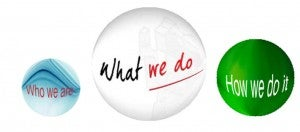
Image 1: The Ethos of the organization is embedded in the message, both in content and in communicative style: Who we are, What we do, How we do it.
Most modern companies have explicit vision or mission statements related to their actions for common wealth, ecology, solidarity or fair trade. It might seem that their social goals should add value to their brand and their public image, but the Ethos of the enterprise is generally seen through facts and actions more than through statements of intention. How can we, web designers, structure a coherent discourse made from those fragmented actions and facts to communicate efficiency, transparency, and customer care?
The collective perception of every community, organization or enterprise is built on the net: it can be reflected in customers’ success stories, in clients’ use cases, and even in users’ experiences, and it must be part of the communications management strategy in any organization. Is there any behavioral theory to help us develop communicative strategies for understanding, organizing and planning some possible actions to improve the social Ethos of our enterprise?
Some clues and suggestions:
- Social considerations need more than intentions: value statements must be complemented with facts and demonstrable results.
- The Greek word “Ethos” initially referred to the “character” that identifies a community, enterprise, or ideology. It usually described the “guiding beliefs or values” of the group. Aristotle, however, also included “expertise” and “knowledge” in this concept, both of which are expressed in the discourse or messages to the audience ([1]). When trying to transmit the Ethos of an organization, content developers should consider including not only intentions and values, but also evidence of expertise and success. Otherwise, the single declaration of intention might sound vain, utopist or plainly meaningless. How many of these visions and missions sound credible?
-
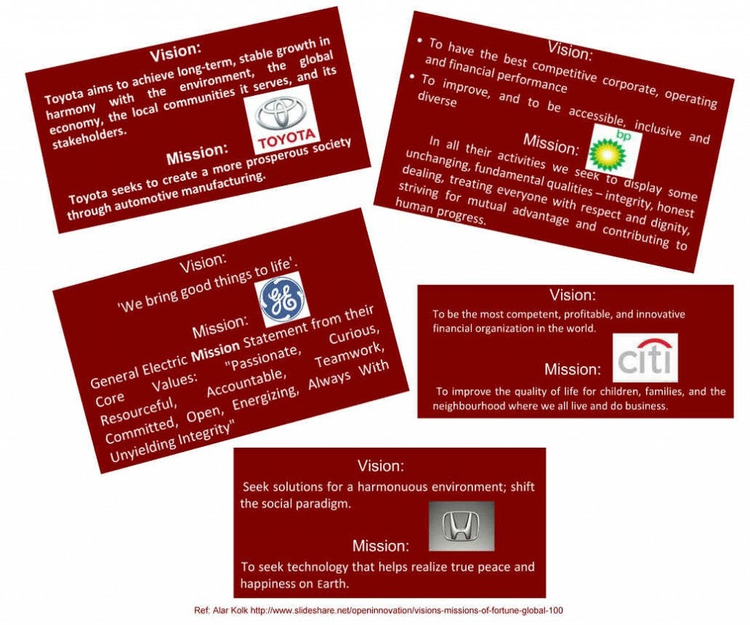
- Image 2: Different statement for corporate Vision and Mission, by Alar Kolk. Source: http://www.slideshare.net/openinnovation/visions-missions-of-fortune-global-100
- Collective acceptance can be built from exogenous or endogenous forces: Ethos provides more added value if it evolves from the companies’ inner goals, expertise and practical results, than if it comes from customer pressure.
In an ideal world, organizations and enterprises would desire common benefit and long-term, sustainable social equity as a path toward its own success and sustainability. In the real world, these endogenous forces can provide social acceptance and added value if they are coherent, shared and transversal, when social Ethos:
- forms an important part of the explicit goals of the company.
- is embedded in organizational processes to increase openness and efficiency (transparency and best practices).
- is consciously encouraged and integrated into management, as a practical tool to save costs and reduce risks (a planned strategy that shows clear economic wisdom).
Sometimes, social consciousness is lead by customers and external audiences. They might force a specific company to adopt different and fairer production policies, or to change their raw materials in order to fit the values expected from a particular brand. These exogenous forces can push companies to “go green” not from conviction, but for marketing reasons, looking for mass appreciation. The consultant Chris Joseph is very clear in his statements[2]:
“Companies that emphasize the fact that they are attempting to be environmentally friendly can gain the favor of like-minded consumers. Make your business’s efforts to go green a part of your marketing campaign by mentioning the green changes you have made, such as using recycled products or changing your manufacturing processes to ones that are safer for the environment. Additionally, you can also donate money to causes that benefit the environment.”
In our globalized and virtualized society, consumers’ opinions can directly affect an enterprise’s revenue and its market value: because of the amplified scale that bad opinions can achieve on the internet, the risk of bad press is more than a possibility. Bad publicity might be overwhelming in a specific moment, but it becomes a permanently visible nightmare when potential clients look for information from search engines. A consistent negative MEME can destroy a corporate project almost at birth, if customers don’t like it, don’t understand it or don’t appreciate its added value. Remember Google Wave? It was shut down in April 2012, after two years of struggling![3]
Companies and organizations cannot passively stand by, hoping to collect customers’ positive opinions. They need to contract professionals to analyze their communicational needs and their social policy; to define profiles to embody the company image on social networks and promote their corporate Ethos; to develop transparent governance and to bridge the endogenous and exogenous forces that build positive social appreciation; to collaborate in making visible the collective consciousness that is being developed.
In such a complex and demanding situation, those representative professionals should be clearly identified, both to establish their expertise and to facilitate user contact. Hiding this information might be seen as corporate opacity or sloughing of responsibility. Which of these two official Avatars in Twitter provides better evidence of transparency in communicative processes?
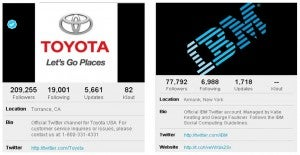
Images 3 and 4: The official @Toyota and the official @IBM_NEWS avatars in Twitter: Only IBM_NEWS mentions the professional managers behind the avatar and the guidelines applied
- Social communicators running social avatars are the representatives of the organization: they need specific skills, knowledge, and clearly defined guidelines to answer customers’ questions and transmit the desired image.
Professionals who network with customers must cultivate specific abilities in order to provide a wide spectrum of solutions to external demands. Their professional knowledge ought to include communication theory, applied psychology, content strategy, and social networking practice, among other skills, because they will need to be able to respond immediately to many different situations. Postponing an answer in order to study the case might be not an option, because of the impact scale and the possible damage that a discontent client can create through the social media. Corporate strategy for empowering the avatars’ work should include the creation of a style guide for networking or a set of common guidelines for social media participation when representing the enterprise.
Networking representatives must identify the desired Ethos, and act accordingly, in the most trivial or most complex scenarios: when helping disoriented customers by email, when calming tension in forums where repeated negative messages may cause unexpected problems, or working to avert a crisis before it starts. Their ability to be ahead of the trends, to guide customers to understanding the company stance, and to moderate public opinion, will be highly valued.
The following series of Tweets provides an example of ineffective responses that communicate sloughing of responsibility. This type of response can eventually damage the perceived Ethos of the enterprise.

Image 4: The @BMW Avatar in Twitter (4th Nov. 2013), showing a consistent delegation of questions.
How can we do it better? Some concepts about Ethos can help us to focus our actions and better understand collective perception, moral consciousness development and social opinion creation.
Understanding moral development and Ethos creation:
Just as individual moral principles are learned and developed throughout life, corporate Ethos can grow and evolve by elaborating more inclusive and respectful policies. The evolution of individual moral stages, studied by Lawrence Kohlberg (1981), can be applied to a+ parallel perception of collective behavior, to explain why people act following moral models that are perceived as generous and fair ([4]).
Kohlberg proposed three main levels of moral building, following Jean Piaget’s evolutionary cognitive levels ([5]), to identify a progressive scale of consciousness development and ethics growth:
- Pre-conceptual morality: Children follow a given behaviour to avoid punishment; adults try to escape risks; organizations try to avoid bad reputation and economic penalties.
- Conventional morality: Children follow rules and orders in order to be accepted; adults obey laws for maintaining order; organizations try to ensure shared commitments for durability and development opportunities.
- Post-conceptual morality: Children act according to judgement diversity and common empathy; adults develop contextual critical thinking and respect for others’ opinions; organizations engage in building welfare, well-being and equity for a better future.
A comparative chart can help us to see these three main levels organized in the six stages that Kohlberg considers to be the essential process for moral development. We use simple statements to exemplify every moral stage, from individual and collective points of view:
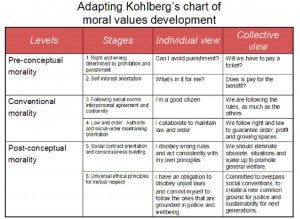
Image 5. Adapted by Neus Lorenzo, from Kohlberg moral stages.
The constant participation of users as stakeholders is raising awareness in companies and organizations, adding social consciousness to usual marketing: business are changing, developing greater transparency and stronger inner consciousness of common benefit and global ecology. Contests, altruist volunteering or community donations are becoming part of open conversations and broadcast communication in shared social platforms: Let your users be the ones to congratulate your organization for positive actions, as in this example from Twitter:
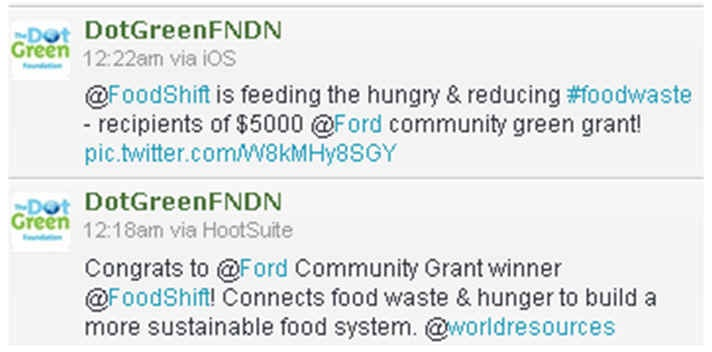
Image 6: @Ford Avatar in Twitter is congratulated by other users for solidarity (9th Nov. 2013)
These messages allow following the track of the social Ethos of an organization in the media. They improve the positive registers on the Internet about companies, products, processes or attitudes in labor markets. All this information is creating big data traffic that should be taken into account when planning, organizing and presenting our products, processes and intentions: big data can tell us if our Ethos and positive social perception are consistently growing. Are our clients feeling identified with our goals? What are our customers demanding from us that could improve the service we provide? Is the enterprise projecting social aims according to local contextual needs?
Ethos is becoming not only the visible information but the essential bond that maintains the social fabric of a community. As Jim Farley says, “Every company is a media company”[6]:
Quoth Jim Farley (@Ford CMO): #Marketing isn’t about creating campaigns; we create newsrooms. [Every company is a media co] #techonomy13
— Michael Chui (@mchui) November 12, 2013
So, be sure you are offering virtual spaces on your site for clients to tell their success stories. Help customers to promote the enterprise’s Ethos through mass media, and amplify their congratulations. Open newsrooms for exchanging opinions, building engagement and generating loyalty. Let users share alternatives, solutions and other added value to your campaigns: giving voice to their perception is not only providing good publicity, it also generates a good example of participatory empowerment for other businesses and a social model for improving democratic exchange in our virtual society.
______
- [1] Ethos, Wikipedia
- [2] What Are the Benefits of Going Green for a Business? by Chris Joseph, http://smallbusiness.chron.com/benefits-going-green-business-3225.html
- [3] Google Wave Shut Down Page: https://support.google.com/answer/1083134
- [4] Lawrence Kohlberg: (1981). Essays on Moral Development, Vol. I: The Philosophy of Moral Development. San Francisco, CA: Harper & Row.
- [5] Jean Piaget
- [6] Jim Farley (@Ford CMO), in Twitter: RT @mchui: Quoth Jim Farley (@Ford CMO): #Marketing isn’t about creating campaigns; we create newsrooms. [Every company is a media co] . Nov 13, 12:12am.